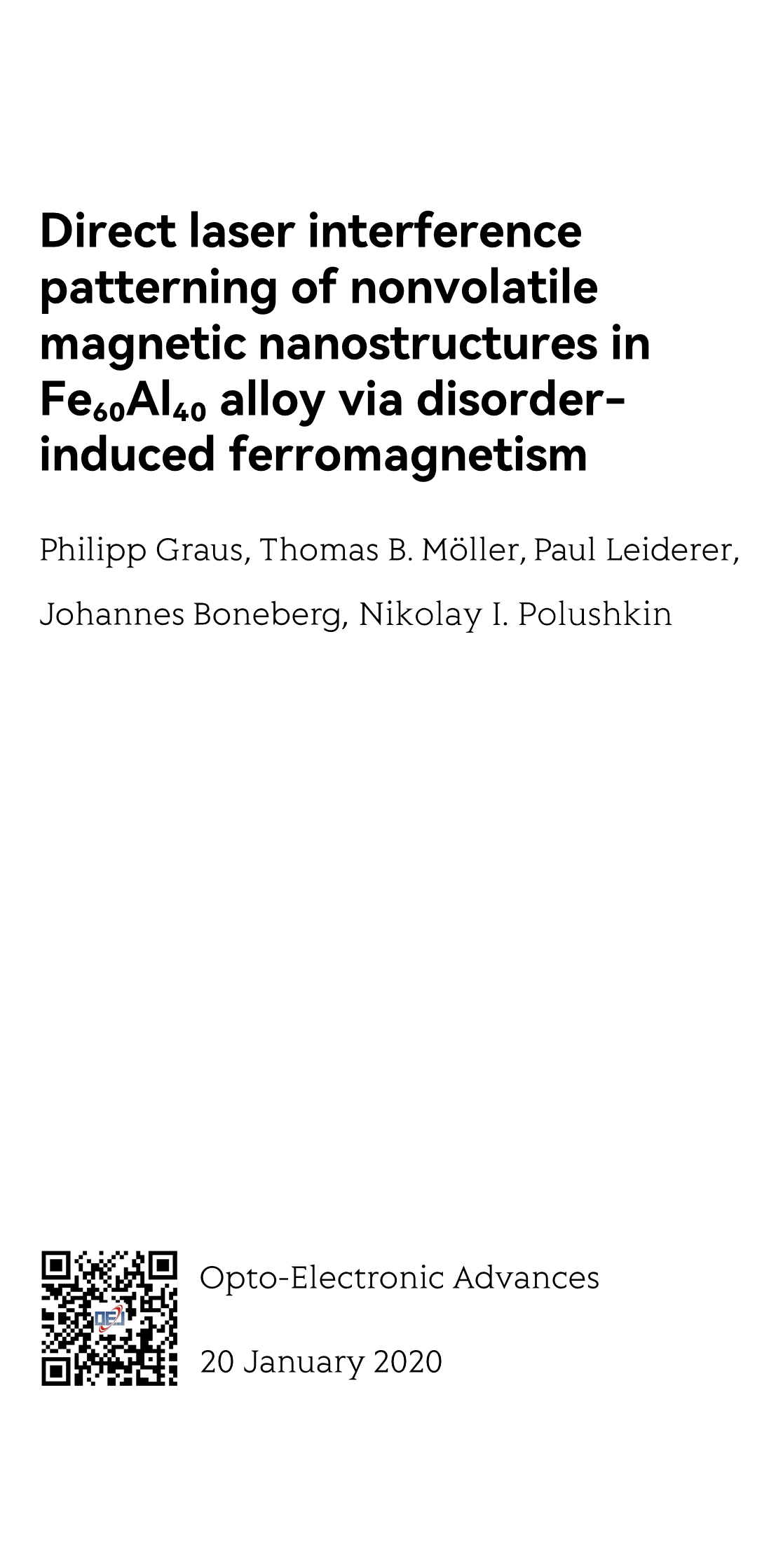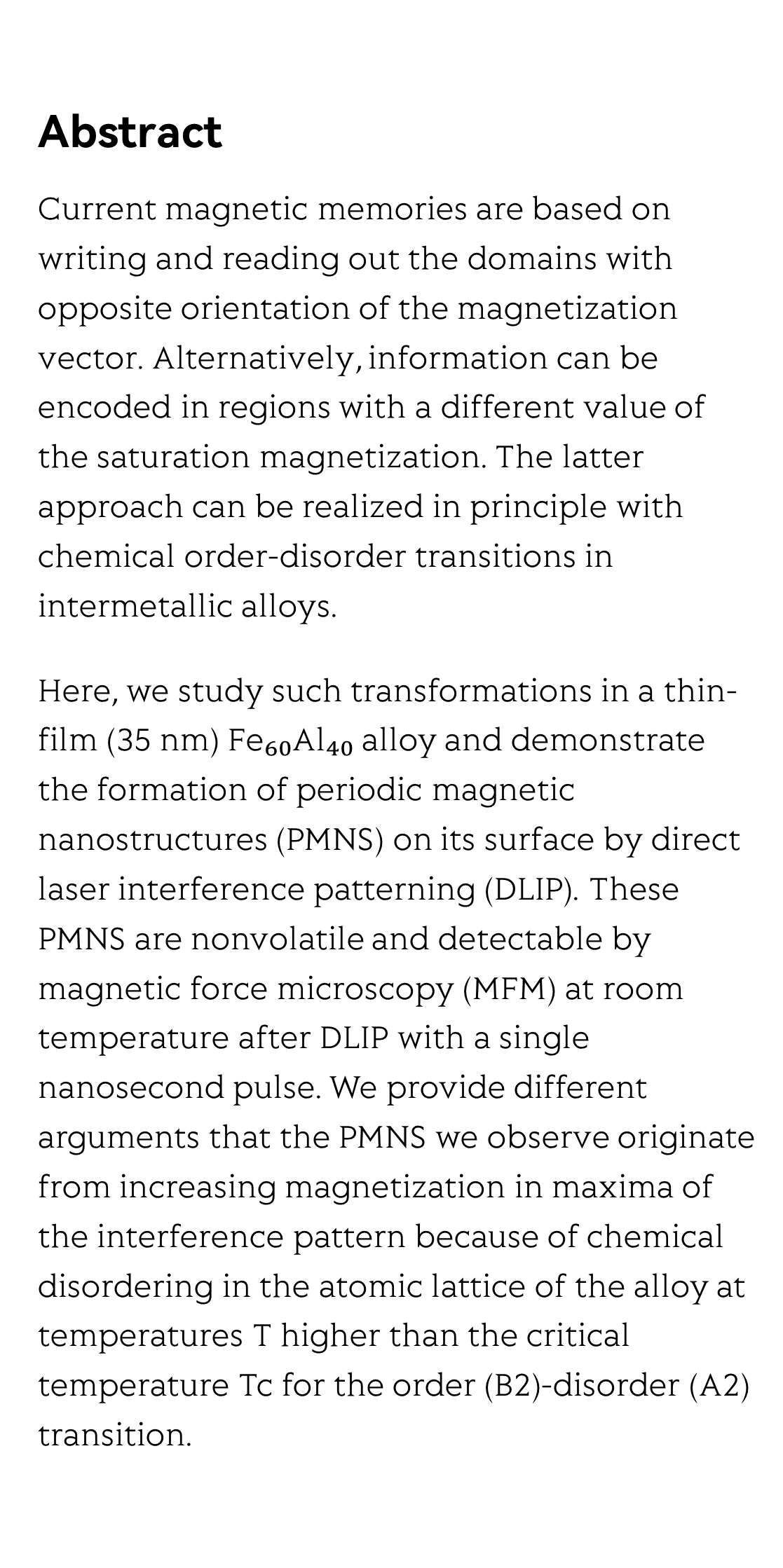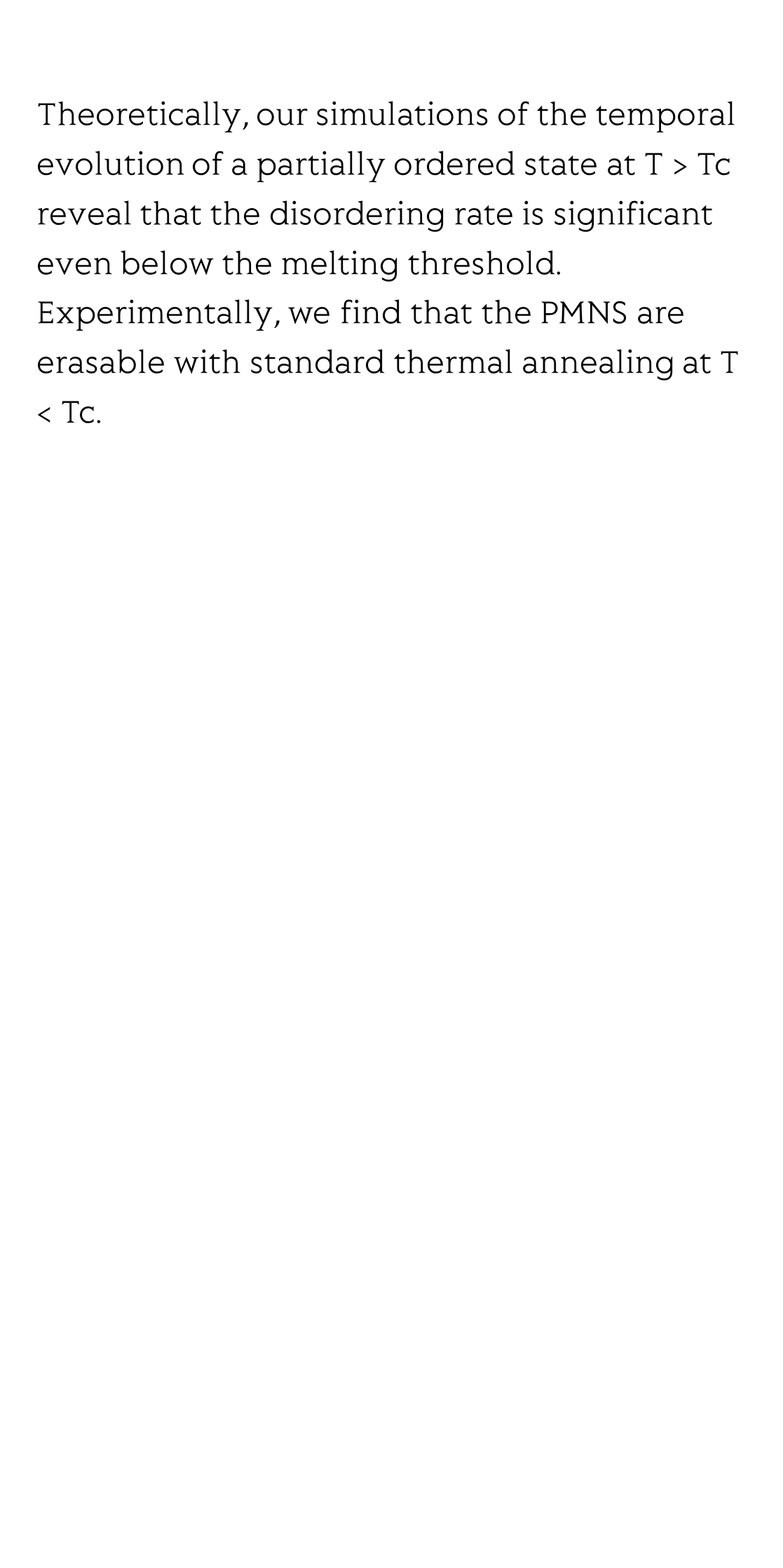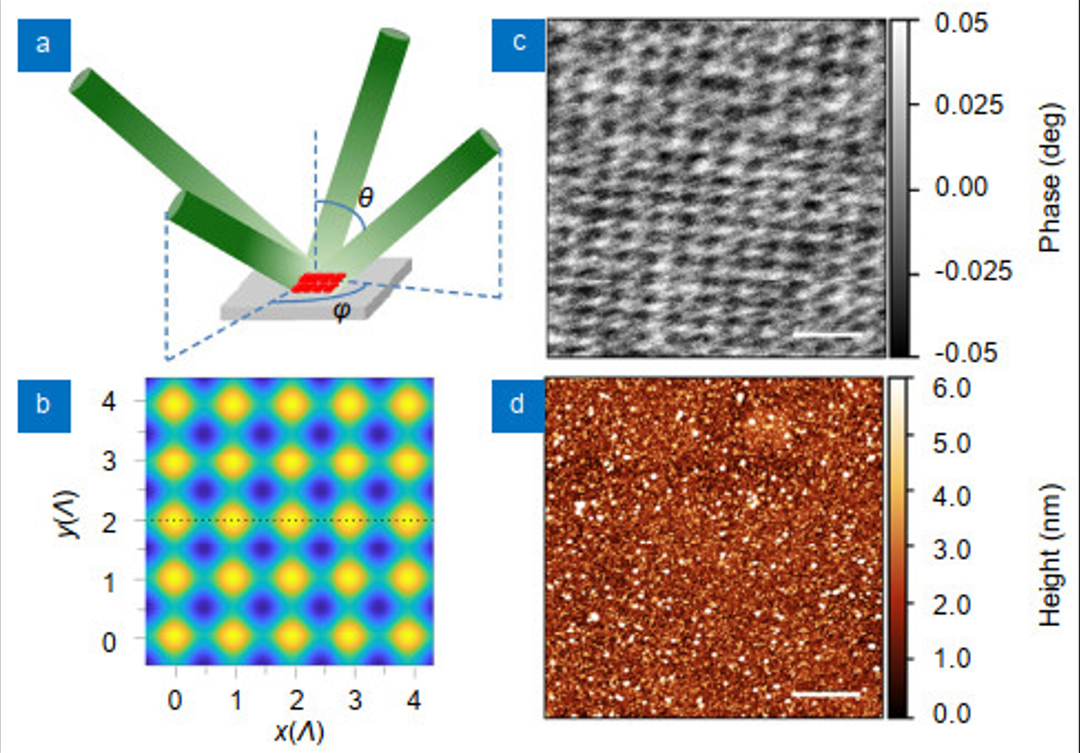Direct laser interference patterning of nonvolatile magnetic nanostructures in Fe₆₀Al₄₀ alloy via disorder-induced ferromagnetism
Fe₆₀Al₄₀合金中非挥发性磁性纳米结构的直接激光干涉图案通过无序诱导铁磁性
無秩序誘起強磁性を介したFe₆₀Al₄₀合金の不揮発性磁性ナノ構造の直接レーザー干渉パターニング
무질서 유발 강자성을 통한 Fe₆₀Al₄₀ 합금의 비휘발성 자기 나노구조의 직접적인 레이저 간섭 패턴화
Patrones de interferencia láser directa de nanoestructuras magnéticas no volátiles en aleación Fe₆₀Al₄₀ mediante ferromagnetismo inducido por desórdenes
Motif d'interférence laser directe de nanostructures magnétiques non volatiles dans un alliage Fe₆₀Al₄₀ via ferromagnétisme induit par le désordre
Прямое лазерное интерференционное построение нелетучих магнитных наноструктур в сплаве Fe₆₀Al₄₀ с помощью ферромагнетизма, индуцированного беспорядком
無秩序誘起強磁性を介したFe₆₀Al₄₀合金の不揮発性磁性ナノ構造の直接レーザー干渉パターニング
무질서 유발 강자성을 통한 Fe₆₀Al₄₀ 합금의 비휘발성 자기 나노구조의 직접적인 레이저 간섭 패턴화
Patrones de interferencia láser directa de nanoestructuras magnéticas no volátiles en aleación Fe₆₀Al₄₀ mediante ferromagnetismo inducido por desórdenes
Motif d'interférence laser directe de nanostructures magnétiques non volatiles dans un alliage Fe₆₀Al₄₀ via ferromagnétisme induit par le désordre
Прямое лазерное интерференционное построение нелетучих магнитных наноструктур в сплаве Fe₆₀Al₄₀ с помощью ферромагнетизма, индуцированного беспорядком




Reviews and Discussions
